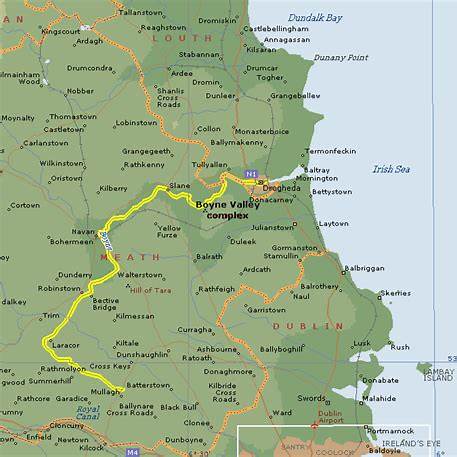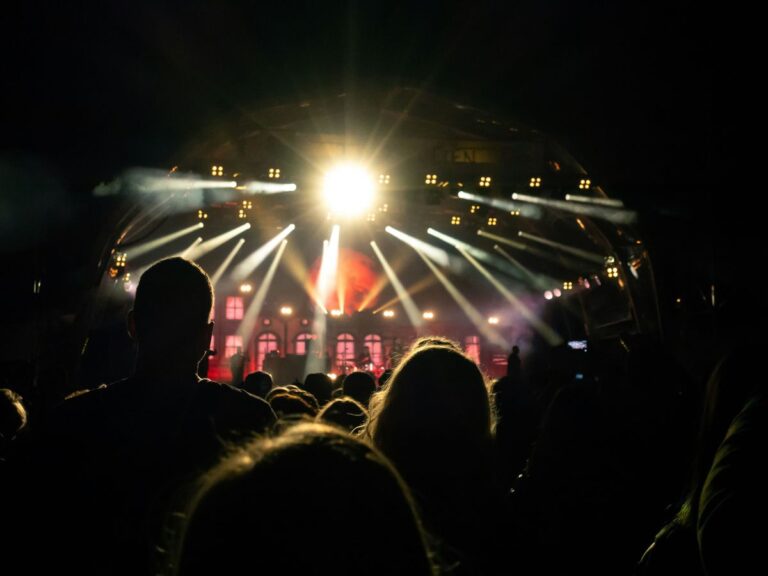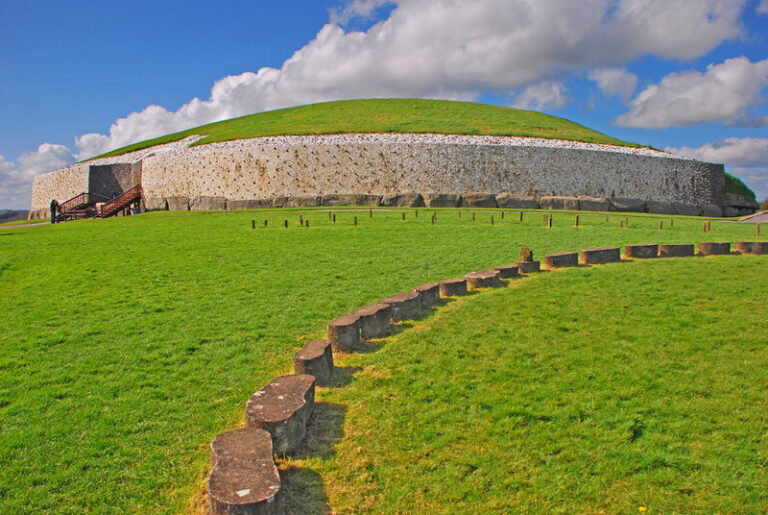Overview of the River Boyne
So, you’re curious about the River Boyne? Well, you’ve come to the right place for a river boyne overview. This isn’t just any old river; it’s a really important one in Ireland, packed with history, old stories, and some seriously cool nature. We’re going to take a look at where it comes from, what makes it special, and why so many people still care about it today. It’s a pretty interesting spot, and there’s a lot to learn about it.
River Boyne – Key Takeaways
- The River Boyne starts in County Kildare and flows northeast through County Meath, eventually reaching the Irish Sea.
- It’s a big deal historically, especially known for the Battle of the Boyne and a bunch of ancient sites along its banks.
- The Boyne Valley is full of amazing old ruins and monuments, like the famous passage tombs at Newgrange.
- Irish legends say the river has ties to a goddess and even the magical Salmon of Knowledge.
- There are several important bridges and old canals built along the river, showing how people have used it over time.
Geographical Overview
The River Boyne is a significant waterway in Ireland, shaping the landscape and history of the region it traverses. Understanding its geographical characteristics is key to appreciating its importance.
Where does the River Boyne start and finish
The Boyne’s journey begins at Trinity Well, located in Newberry Hall, near Carbury in County Kildare. This unassuming spring marks the start of the river’s 112-kilometer (70-mile) course. From its source, the Boyne flows in a northeasterly direction. The river’s flow is influenced by rainfall and the surrounding terrain, creating a dynamic and ever-changing waterway. The river eventually empties into the Irish Sea between Mornington, County Meath, and Baltray, County Louth. The Boyne’s course is vital for understanding its impact on the surrounding areas.
What counties does the River boyne flow through?
The catchment area of the River Boyne encompasses a substantial portion of eastern Ireland. It meanders through the counties of Kildare, Offaly, Meath, and Louth, carving its way through the Irish countryside. This area includes all the land from which rainfall drains into the river and its tributaries. The Boyne’s catchment area is characterized by a mix of agricultural land, pasture, and urban development. The health of the river is directly linked to the land use practices within its catchment, making sustainable management crucial.
The Boyne’s geographical features have played a significant role in shaping the region’s history and culture. Its waters have provided sustenance, transportation, and a source of inspiration for generations. Understanding the river’s geography is essential for appreciating its multifaceted importance.
Historical Significance
The River Boyne isn’t just a river; it’s a thread woven into the very fabric of Irish history. From ancient times to more recent conflicts, the Boyne has been a silent witness to the ebb and flow of power and culture.
Ancient Origins
Long before recorded history, the Boyne Valley was a hub of activity. The area is rich with archaeological sites, suggesting a significant population thrived here. These early inhabitants left behind monuments and artifacts that hint at a complex society with deep roots in the land. The river itself likely played a vital role in their lives, providing sustenance, transportation, and a connection to the wider world. Evidence of prehistoric art Boyne Valley has been discovered, further cementing the area’s importance in ancient times.
Battle of the Boyne
Of course, no discussion of the Boyne’s historical significance is complete without mentioning the Battle of the Boyne. This battle, fought in 1690, was a turning point in Irish and British history. It pitted the forces of King James II against those of William of Orange, and its outcome had profound consequences for the political and religious landscape of Ireland. The battle itself took place along the banks of the river, forever linking the Boyne to this pivotal moment. The Williamite war in Ireland was a major event.
Notable Historical Sites
The Boyne Valley is dotted with historical sites, each telling its own story.
- Trim Castle, one of the largest Anglo-Norman castles in Ireland, stands as a testament to medieval power.
- The Hill of Tara, the ancient seat of the High Kings of Ireland, offers panoramic views of the surrounding countryside and a glimpse into Ireland’s regal past.
- Mellifont Abbey, a Cistercian monastery, showcases the religious and architectural heritage of the region.
The Boyne Valley is more than just a collection of old stones; it’s a living landscape where history comes alive. Walking through these sites, you can almost hear the echoes of the past, the whispers of kings and monks, and the clash of armies.
These sites, along with countless others, make the Boyne Valley a treasure trove for anyone interested in exploring Ireland’s rich and complex history. You can even book luxury chauffeur services to see the sites.
Archaeological Heritage
The River Boyne region is super rich in archaeological stuff. It’s not just a river; it’s like a history book you can walk through. From ancient monuments to random cool finds, there’s a lot to see.
Boyne Valley Monuments
The Boyne Valley is most famous for Brú na Bóinne, a UNESCO World Heritage Site. This place is packed with Neolithic monuments, some of which are older than Stonehenge or the Egyptian pyramids. We’re talking about massive passage tombs, standing stones, and other prehistoric structures that show how important this area was thousands of years ago. It’s a seriously impressive site, and you can easily spend a whole day exploring it. It’s not just one thing; it’s a whole complex of ancient wonders.
Passage Tombs
Newgrange, Knowth, and Dowth are the big three passage tombs in the Boyne Valley. Newgrange is probably the most well-known, especially because of the way the winter solstice sunlight shines right into the burial chamber. Knowth is huge and has a ton of megalithic art. Dowth is a bit less excavated, but still really interesting. These tombs weren’t just burial sites; they were also probably important places for ceremonies and rituals. They’re like time capsules from the Neolithic period.
Other Archaeological Finds
Besides the big monuments, there have been other cool finds in and around the River Boyne. For example:
- Log Boat: An ancient log boat was found in the Boyne near Drogheda. Experts think it could be about 5,000 years old. What’s really interesting is that it had oval shapes on the upper edge, which might have been for oars. That’s a pretty rare feature for log boats from this time.
- Prehistoric Art: Back in 2013, someone found a rock with geometric carvings near Donore, County Meath. Archaeologists think it’s prehistoric art. It’s always cool to find these smaller, less famous artifacts because they give us more clues about what life was like way back then.
- Viking Ship: In 2006, they found the remains of a Viking ship in the riverbed in Drogheda. It was during some dredging work. They’re planning to excavate it because it’s a hazard to boats. Finding a Viking ship that far inland is a big deal and shows how the Vikings used the river for trade and raids.
The Boyne River area is more than just pretty scenery; it’s a place where you can literally walk in the footsteps of people who lived thousands of years ago. Each discovery adds another piece to the puzzle of Ireland’s ancient past. It’s a reminder that history is all around us, sometimes hidden just below the surface.
Mythological Connections
The River Boyne isn’t just a geographical feature; it’s deeply woven into Irish mythology and folklore. The stories connected to the river add layers of meaning and wonder to its already rich history. It’s pretty cool how a river can be so important in both the real world and in legends.
Goddess Boann
The river’s name itself comes from the goddess Boann. Boann, whose name translates to “white cow,” is a significant figure in Irish mythology. Legend says she created the river. The story goes that Boann defied her husband, Nechtain, by approaching a sacred well, the Well of Wisdom. The waters surged forth, creating the River Boyne. This tale highlights the power and importance of goddesses in ancient Irish beliefs. The River Boyne is believed to be named after her.
Salmon of Knowledge
The Salmon of Knowledge is another famous legend linked to the Boyne. This salmon gained all the world’s wisdom by eating hazelnuts that fell into the Well of Wisdom. It was foretold that whoever ate the salmon would gain this knowledge. Finnegas, a poet, spent years trying to catch it. Eventually, he did, near the ‘Pool of the Boyne’.
Finnegas instructed his apprentice, a boy named Deimne Maol, to cook the salmon. Deimne burned his thumb and instinctively put it in his mouth. He absorbed the salmon’s wisdom. This boy was actually Fionn Mac Cumhaill, who became a great hero in Irish legend. It’s a great story about how knowledge can be gained in unexpected ways.
The story of the Salmon of Knowledge is a reminder that wisdom can be found in the most unexpected places. It also shows how important the River Boyne was considered in ancient times, as a place where such a magical event could occur.
Ancient Irish Legends
Beyond Boann and the Salmon of Knowledge, the River Boyne appears in other ancient Irish legends. It’s often depicted as a sacred and powerful place, connected to the otherworld. The river’s valley, with its ancient monuments and passage tombs, reinforces this sense of mystery and connection to the past. The Boyne Valley is considered the heart of Ireland’s Ancient East. The river’s presence enriches the stories and adds to the overall sense of wonder associated with Irish mythology.
Here are some recurring themes in these legends:
- The river as a source of life and wisdom.
- The connection between the natural world and the supernatural.
- The importance of respecting sacred places.
Infrastructure and Crossings
The River Boyne, while historically significant and naturally beautiful, also plays a vital role in transportation and infrastructure. Over the centuries, numerous bridges, viaducts, and navigation systems have been constructed to facilitate movement and trade along its course. These structures not only serve practical purposes but also stand as testaments to human ingenuity and engineering prowess.
Major Bridges
The River Boyne is spanned by a number of significant bridges, each with its own story. These bridges facilitate road transport across the river. For example, An Coimisiún Pleanala has approved the construction of a Slane bypass to improve road safety.
- The Boyne Viaduct in Drogheda is a well-known landmark.
- The Mary McAleese Boyne Valley Bridge is a cable-stayed bridge that forms part of the M1 motorway.
- Many older stone bridges, some dating back centuries, still carry local traffic.
Railway Viaduct
Perhaps the most iconic structure crossing the Boyne is the Boyne Viaduct. This impressive railway bridge, located near Drogheda, has been a vital link in the Dublin-Belfast railway line since its construction in the mid-19th century. Its tall lattice girders and sturdy piers make it a striking feature of the landscape.
Boyne Navigation
The Boyne Navigation is a series of canals and navigable sections of the river that were developed to allow boats to travel further inland. While not as heavily used as in the past, efforts have been made to restore and preserve parts of the navigation for recreational purposes. This includes maintaining locks and towpaths, offering a glimpse into the region’s industrial heritage. You can explore other routes & trails in the area.
The Boyne Navigation includes:
- A series of locks to manage water levels.
- Sections of canal running parallel to the river.
- Towpaths used by horses to pull barges.
Angling and Wildlife
The River Boyne isn’t just historically significant; it’s also a pretty great spot for fishing and home to a diverse ecosystem. Whether you’re an experienced angler or just appreciate the natural world, the Boyne has something to offer.
Brown Trout Fishing
If you’re into trout fishing, the Boyne is definitely worth checking out. The river is known for its wild brown trout population. You can find some decent-sized trout here, with some reaching up to 6 or 7 pounds, though the average is closer to a pound. Because it’s a limestone river, you’ll see hatches of olives, sedges, and mayflies, which makes it a good spot for fly fishing. Some popular spots include the Navan area, Kilcairn, and stretches downstream from Slane, like the Scabby Arch. The River Boyne is renowned for its exceptional Brown Trout fishing.
Angling Regulations
Most of the angling on the River Boyne is managed by angling associations, though some stretches are privately owned. If you’re planning to fish for brown trout, you’ll need to get a permit from the relevant association. Make sure you follow their rules and regulations. A lot of these associations encourage catch and release, so keep that in mind.
River Ecosystem
Beyond the fish, the River Boyne supports a variety of wildlife. You’ll see different kinds of birds, insects, and plant life along its banks. The river’s health is important, and there are efforts to maintain and improve the water quality and protect the natural habitat. It’s a pretty cool place to just sit and observe nature, even if you’re not fishing.
The River Boyne’s ecosystem is a delicate balance. Pollution and habitat destruction can have serious consequences for the fish and other wildlife that depend on the river. Responsible angling and conservation efforts are essential to preserving this natural resource for future generations.
Names and Etymology
Ptolemy’s Bouwinda
So, the River Boyne has been around for a long time, and people have been calling it different things. Back in the 2nd century, Ptolemy, that Greek geographer, put Ireland on the map, and he included the Boyne. He called it ‘Bouwinda’ or ‘Boubinda’. Apparently, that means “white cow” in Celtic. Who knew?
Giraldus Cambrensis’ Boandus
Fast forward to the Middle Ages, and you’ve got Giraldus Cambrensis. He decided to call the river Boandus. It’s interesting how names change over time, right? It makes you wonder what the story is behind each version.
Irish Language Roots
Of course, the name we use now, Boyne, comes from Irish. It’s an anglicized version of the name of the goddess Boann. According to Irish mythology, she’s the one who created the river. There’s also a cool story about Fionn mac Cumhail catching the Salmon of Knowledge in the river. The Meath part of the Boyne even had another name back then: Smior Fionn Feidhlimthe, which means “the marrow of Fionn Feilim”.
It’s pretty wild to think about how a river can have so many names and stories attached to it. Each name tells a little piece of the Boyne’s history and its importance to the people who lived along its banks.
Ever wonder where names come from or what they really mean? It’s pretty cool how every name has a story behind it. If you’re curious to learn more about the fascinating origins of names, including your own, head over to our website. We’ve got tons of interesting facts waiting for you!
Conclusion
So, that’s a quick look at the River Boyne. It’s more than just a waterway; it’s a big part of Ireland’s story. From old myths to important battles, this river has seen a lot. It’s a spot where history and nature really come together. If you ever get the chance, it’s worth checking out the Boyne Valley. There’s just so much to see and learn there.
Frequently Asked Questions
How long is the River Boyne?
The River Boyne is about 70 miles (112 kilometers) long. It winds its way through several counties before emptying into the Irish Sea.
What is the River Boyne famous for?
The River Boyne is famous for many things! It’s known for its rich history, especially the Battle of the Boyne. It’s also home to ancient sites like Newgrange and Knowth, and it’s connected to old Irish myths about goddesses and magical fish.
Can you fish in the River Boyne?
Yes, the River Boyne is a popular spot for fishing, especially for brown trout. Many fishing clubs manage different parts of the river, and visitors can get permits to fish there.
What is the Boyne Valley?
The Boyne Valley is a special area around the river that’s full of history and old ruins. It includes famous places like the Hill of Tara, Trim Castle, and the ancient burial mounds of Newgrange, Knowth, and Dowth.
What does the name ‘Boyne’ mean?
The name ‘Boyne’ comes from ancient times. It’s believed to be an old Celtic word, ‘Bouwinda’ or ‘Boubinda,’ which means ‘white cow.’ In Irish myths, the river is also linked to the goddess Boann.
Plan Your Boyne Valley Adventure Today
From the ancient tombs of Newgrange to the medieval walls of Trim Castle, County Meath is truly the crown jewel of Ireland’s Ancient East. With convenient Dublin Airport transfers, a wide choice of accommodation, and unforgettable heritage sites, there has never been a better time to visit.
Ready to experience it all? Book your Boyne Valley tour with Ancient East Tour Company today and let us create the perfect Irish adventure for you.





